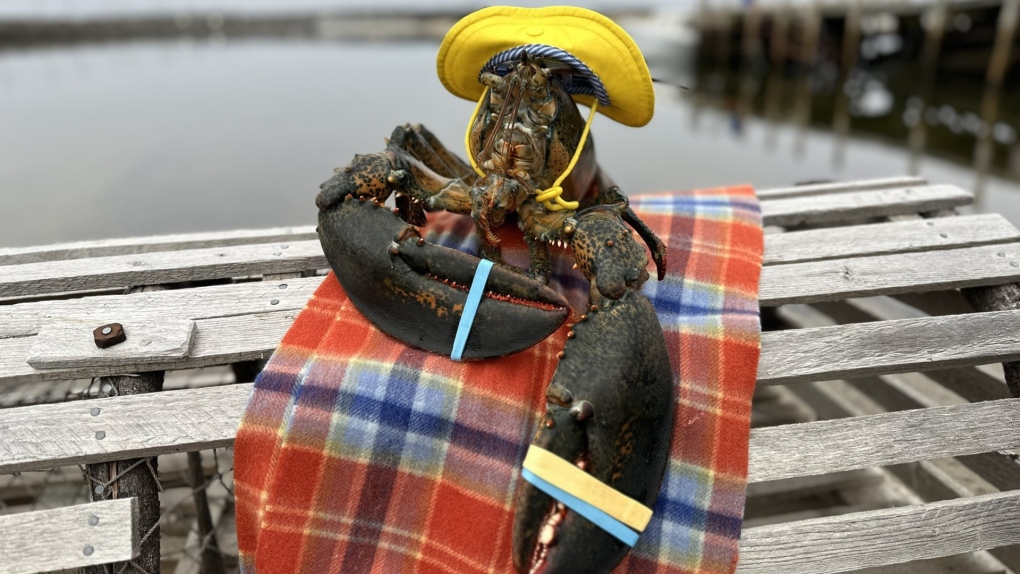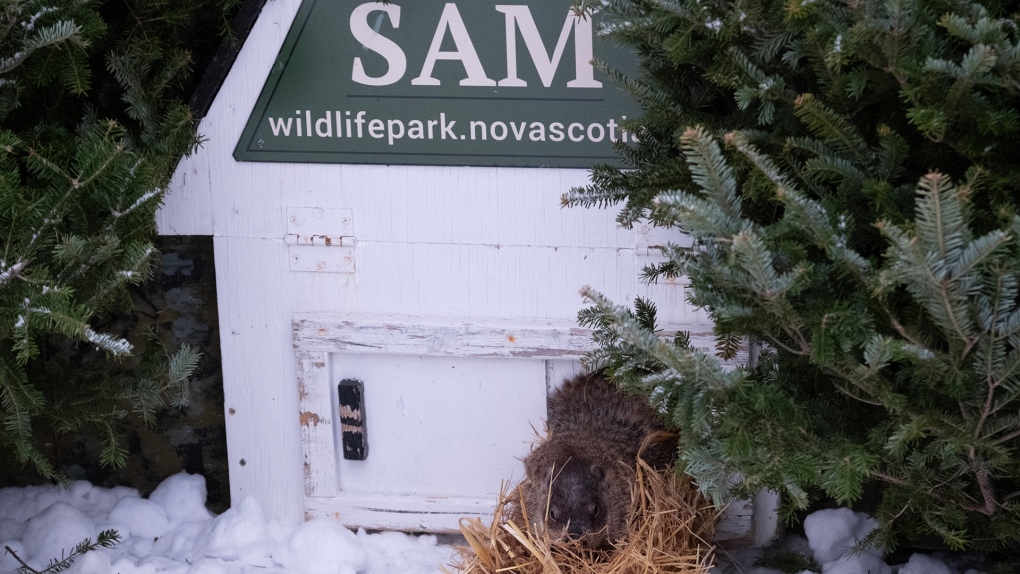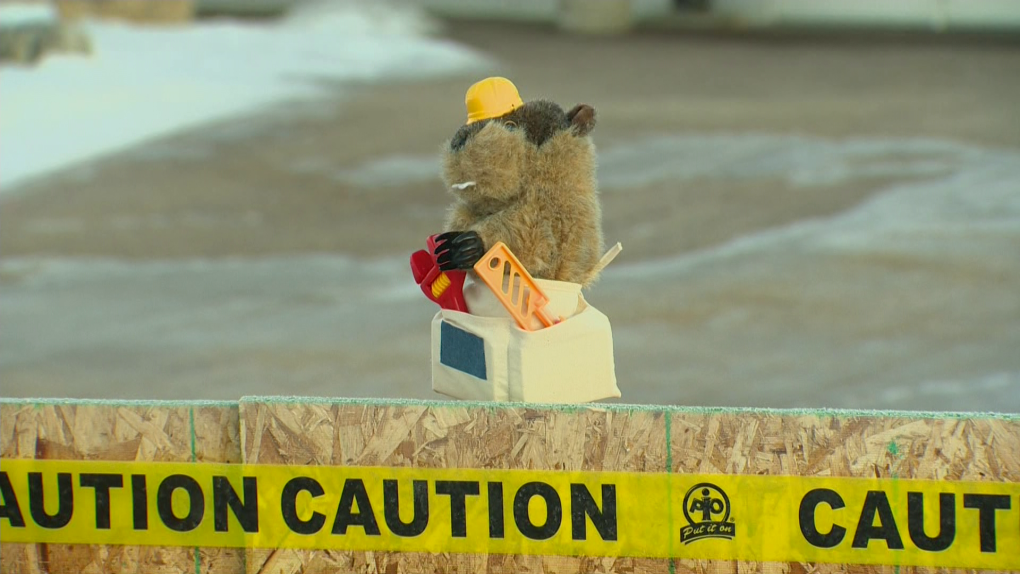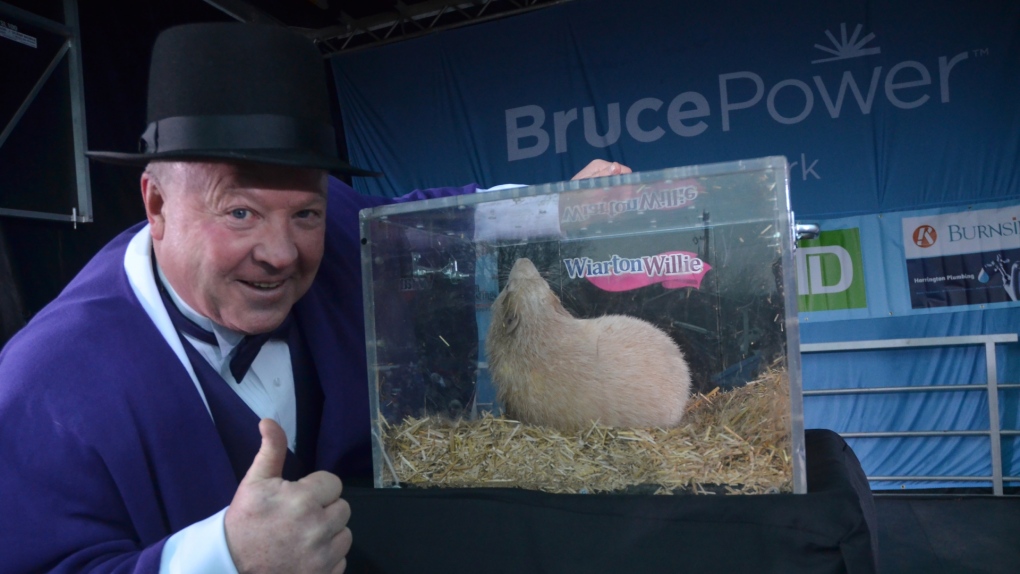Groundhog or Groundhog-wash? Canada's prognosticating rodents, lobster give mixed predictions
Thursday marked the one day a year when groundhogs with alliterative names get their 15 minutes of fame and humans wait with baited breath on their spring predictions.
The most famous furry forecasters here in Canada are Ontario's Wiarton Willie, Nova Scotia's Shubenacadie Sam and Quebec's Fred la Marmotte.
The trio all reportedly did not see their shadows on Friday morning, which according to centuries-old folklore indicates an early spring.
However, in western Canada, Alberta's Balzac Billy (a person in a groundhog costume) and Manitoba Merv (a rodent finger puppet) are both predicting six more weeks of winter.
Lucy the Lobster in Nova Scotia is also forecasting a longer winter in 2024.
 Lucy the Lobster from Barrington, N.S. (X/@LJB_OceanSide)So how seriously should we take these predictions?
Lucy the Lobster from Barrington, N.S. (X/@LJB_OceanSide)So how seriously should we take these predictions?
David Phillips, senior climatologist with Environment and Climate Change Canada, says with the tiniest grain of salt
"It's sort of where science fiction meets science," Phillips said. "It's kind of cute and it's harmless, I think, and a bit of a hoax."
Yet Canadians and Americans can't seem to get enough of the day, so much so that Phillips has dived into the history behind Groundhog Day.
 Shubenacadie Sam peers out of her burrow before predicting an early spring during a Groundhog Day event at the Shubenacadie Wildlife Park in Nova Scotia on Friday, Feb.2, 2024. (THE CANADIAN PRESS/Ted Pritchard)In an article he co-wrote for the Canadian Encyclopedia, Phillips explains the origins of Groundhog Day date back to Medieval Europe.
Shubenacadie Sam peers out of her burrow before predicting an early spring during a Groundhog Day event at the Shubenacadie Wildlife Park in Nova Scotia on Friday, Feb.2, 2024. (THE CANADIAN PRESS/Ted Pritchard)In an article he co-wrote for the Canadian Encyclopedia, Phillips explains the origins of Groundhog Day date back to Medieval Europe.
According to European beliefs, the awakening of hibernating animals like bears, otters and hedgehogs in early February was an indication of spring's arrival.
European settlers continued this belief when they came to North America and used the marmot to predict the forecast.
"But the problem is this, Europe is a much milder climate so it's quite likely on Feb. 2 the groundhog would be stirring and coming out, but in North America and Canada, the (groundhog's) burrow is covered in snow and he has to be coaxed out of it."
 Manitoba Merv appears wearing a construction vest, tool belt and hard hat, and saw his shadow on Groundhog Day, meaning six more weeks of winter for the province. (Image source: Scott Andersson/CTV News Winnipeg)While Feb. 2 plagues skilled meteorologists across the continent, Phillips can appreciate that a little levity and silliness can go a long way during the longest season of the year.
Manitoba Merv appears wearing a construction vest, tool belt and hard hat, and saw his shadow on Groundhog Day, meaning six more weeks of winter for the province. (Image source: Scott Andersson/CTV News Winnipeg)While Feb. 2 plagues skilled meteorologists across the continent, Phillips can appreciate that a little levity and silliness can go a long way during the longest season of the year.
"I know in Wiarton, near where I live, my gosh, they have bonspiels, arts and crafts festivals and make over $1 million a year in that little town all because of Wiarton Willie, so they keep this alive because its good for them."
 Wiarton Mayor Jay Kirkland announces an early spring with Wiarton Willie during a Groundhog Day event in Wiarton, Ont. on Friday, Feb.2, 2024. (THE CANADIAN PRESS/Doug Ball)When it comes to the forecast over the next couple of months, Phillips is predicting winter is not done with Canada yet, but says cold arctic air shouldn't attack Alberta as aggressively as it did in January.
Wiarton Mayor Jay Kirkland announces an early spring with Wiarton Willie during a Groundhog Day event in Wiarton, Ont. on Friday, Feb.2, 2024. (THE CANADIAN PRESS/Doug Ball)When it comes to the forecast over the next couple of months, Phillips is predicting winter is not done with Canada yet, but says cold arctic air shouldn't attack Alberta as aggressively as it did in January.
"Generally when the cold comes back after this time, it's usually not as intensely cold, it also doesn't last as long so there is some hope we are starting to see winter wind down but it's not over."
CTVNews.ca Top Stories

Ministers Joly, LeBlanc travel to Florida to meet with Trump's team
Two members of Prime Minister Justin Trudeau's cabinet will be in Palm Beach, Fla., Friday to meet with members of Donald Trump's team.
India alleges widespread trafficking of international students through Canada to U.S.
Indian law enforcement agencies say they are investigating alleged links between dozens of colleges in Canada and two 'entities' in Mumbai accused of illegally ferrying students across the Canada-United States border.
Teen actor Hudson Meek, who appeared in 'Baby Driver,' dies after falling from moving vehicle
Hudson Meek, the 16-year-old actor who appeared in 'Baby Driver,' died last week after falling from a moving vehicle in Vestavia Hills, Alabama, according to CNN affiliate WVTM.
Pizza deliverer in Florida charged with stabbing pregnant woman at motel after tip dispute
A pizza deliverer in central Florida has been charged with pushing her way into a motel room with an accomplice and stabbing a pregnant woman after a dispute over a tip, authorities said.
Unwanted gift card in your stocking? Don't let it go to waste
Gift cards can be a quick and easy present for those who don't know what to buy and offer the recipient a chance to pick out something nice for themselves, but sometimes they can still miss the mark.
Aviation experts say Russia's air defence fire likely caused Azerbaijan plane crash as nation mourns
Aviation experts said Thursday that Russian air defence fire was likely responsible for the Azerbaijani plane crash the day before that killed 38 people and left all 29 survivors injured.
Police identify victim of Christmas Day homicide in Hintonburg, charge suspect
The Ottawa Police Service says the victim who had been killed on Christmas Day in Hintonburg has been identified.
Cat food that caused bird-flu death of Oregon pet was distributed in B.C.: officials
Pet food contaminated with bird flu – which killed a house cat in Oregon – was distributed and sold in British Columbia, according to officials south of the border.
Raised in Sask. after his family fled Hungary, this man spent decades spying on communists for the RCMP
As a Communist Party member in Calgary in the early 1940s, Frank Hadesbeck performed clerical work at the party office, printed leaflets and sold books.































